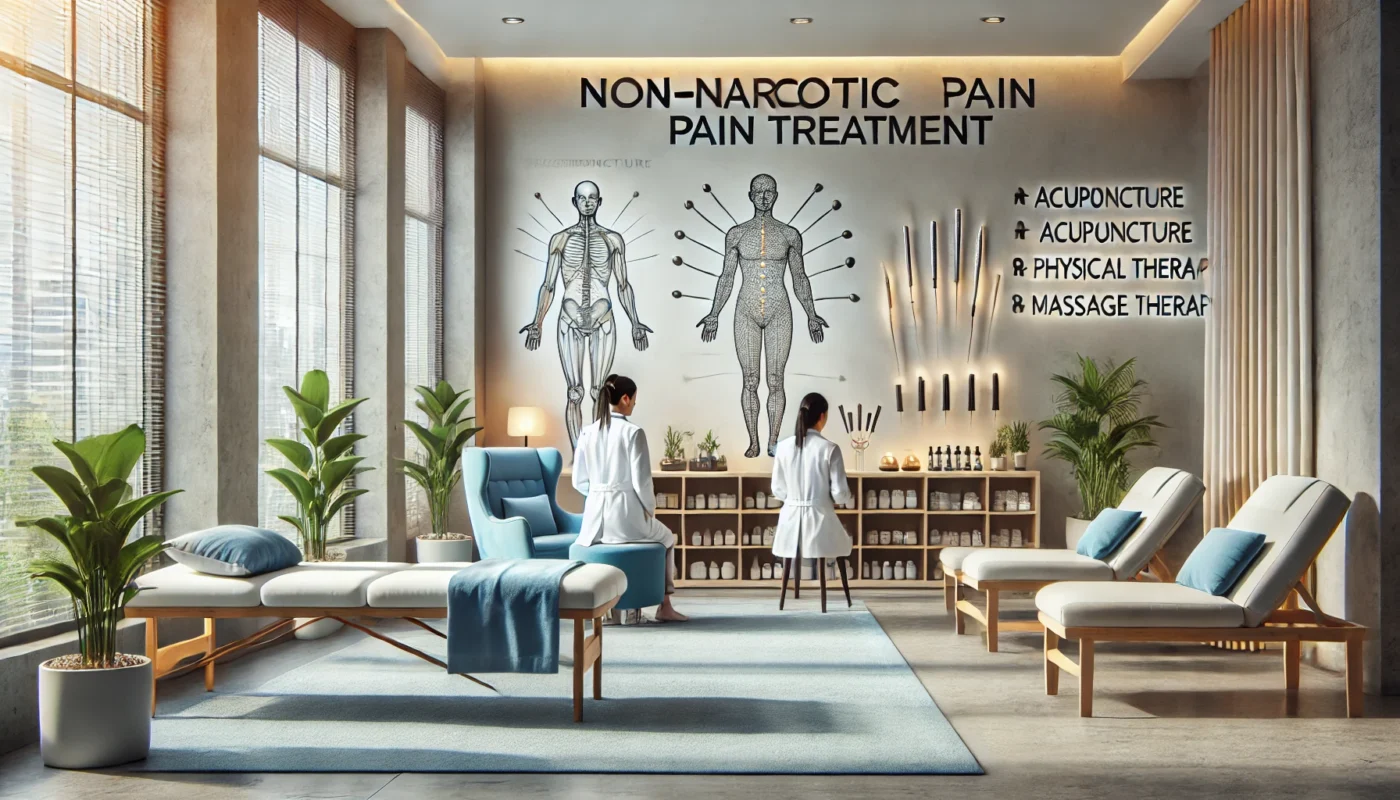Non-narcotic pain medications are a class of drugs that provide relief from pain without the risk of addiction associated with opioids. They work through different mechanisms and can be used for a variety of conditions.
You may also like: Understanding Long-Term Pain Relief Options
Mechanisms of Action
Non-narcotic pain medications operate through various pathways in the body to alleviate pain. Unlike opioids, which primarily target the brain’s opioid receptors, non-narcotic options might inhibit pain signals at the site of injury or reduce inflammation at the cellular level. Understanding these mechanisms can help in selecting the right medication for specific pain conditions.
Conditions Treated
These medications are versatile and can address a broad spectrum of pain-related conditions. From acute injuries to chronic conditions like arthritis or fibromyalgia, non-narcotic treatments provide a tailored approach to pain management. This versatility makes them suitable for both short-term pain relief and long-term management strategies.
Safety Profiles
The safety profile of non-narcotic pain medications is generally more favorable compared to opioids. They are less likely to cause severe respiratory depression, a common and potentially fatal side effect of opioids. Additionally, non-narcotic options usually present fewer risks of overdose, making them safer for use in diverse patient populations, including the elderly and those with co-morbid conditions.
Types of Non-Narcotic Pain Medications
The world of non-narcotic pain medications is diverse, offering numerous options for those seeking alternatives to traditional opioids. Here’s a closer look at some of the most common types:
Acetaminophen
Acetaminophen is often recommended for mild to moderate pain and is widely recognized for its efficacy in reducing fever and providing pain relief. It is commonly found in over-the-counter medications like Tylenol. The drug is well-tolerated in most people, though it can cause liver damage if taken in excessive amounts, highlighting the importance of adhering to recommended dosages.
Nonsteroidal Anti-Inflammatory Drugs (NSAIDs)
NSAIDs, including ibuprofen (Advil, Motrin) and naproxen (Aleve), are particularly effective for pain associated with inflammation, such as arthritis or muscle injuries. They work by blocking the production of prostaglandins, chemicals in the body that promote inflammation, pain, and fever. However, prolonged use can lead to gastrointestinal issues, so they should be used judiciously.
Anticonvulsants
Medications like gabapentin and pregabalin are used for nerve pain. They alter the way nerves send messages to the brain, providing relief from neuropathic pain. These drugs are particularly beneficial for conditions like diabetic neuropathy or post-herpetic neuralgia. While generally well-tolerated, they can cause dizziness or drowsiness in some individuals.
Antidepressants
Certain antidepressants, including tricyclics and selective serotonin and norepinephrine reuptake inhibitors (SNRIs), are effective in managing chronic pain, especially neuropathic pain. They work by modulating neurotransmitters in the brain that influence mood and pain perception. This dual action can be advantageous for patients who experience both pain and depression.
Topical Treatments
Topical treatments include creams, gels, and patches applied directly to the skin. They are particularly useful for localized pain relief, such as joint or muscle pain, and have minimal systemic effects. These treatments often incorporate ingredients like capsaicin or menthol, which provide a soothing sensation and can reduce pain signaling in the affected area.
The Advantages of Non-Narcotic Pain Treatments
Non-narcotic pain treatments offer several benefits over traditional opioid medications, making them an attractive option for many individuals.
Reduced Risk of Addiction
One of the most significant advantages of non-narcotic pain treatments is their reduced potential for addiction. Opioid medications are notorious for their addictive properties, which can lead to dependency and substance abuse disorders. Non-narcotic options, on the other hand, are generally considered safer in this regard. Patients can use them with less concern about developing a substance use disorder, which is crucial for long-term pain management.
Fewer Side Effects
Opioids are associated with a range of side effects, including drowsiness, constipation, nausea, and respiratory depression. Non-narcotic pain medications tend to have a more favorable side effect profile, making them suitable for long-term use in chronic pain management. While side effects can still occur, they are often less severe and more manageable, enhancing the patient’s overall quality of life.

Versatility in Treatment
Non-narcotic pain treatments encompass a wide range of medications and therapies, allowing for tailored approaches to pain management. Whether the pain is due to inflammation, nerve damage, or other causes, there is likely a non-narcotic option that can help. This versatility allows healthcare providers to customize treatment plans to the unique needs of each patient, potentially improving outcomes and satisfaction.
Alternative Treatments for Pain Management
In addition to non-narcotic medications, several alternative therapies can complement pain management strategies. These approaches focus on holistic and integrative methods to relieve pain and improve overall well-being.
Physical Therapy and Exercise
Physical therapy is a cornerstone of non-narcotic pain management. Therapeutic exercises and manual techniques can enhance mobility, strengthen muscles, and alleviate pain. Engaging in regular physical activity is also beneficial for maintaining overall health and preventing future injuries. Personalized exercise programs can be developed to address specific areas of pain or weakness, ensuring a focused and effective treatment approach.
Acupuncture
Acupuncture, a traditional Chinese medicine practice, involves the insertion of thin needles into specific points on the body. It has been shown to be effective in reducing various types of pain, including back pain, osteoarthritis, and migraines. The practice is thought to stimulate the body’s natural healing processes, promoting the release of endorphins and altering pain perception pathways.
Mind-Body Therapies
Mind-body therapies such as meditation, yoga, and tai chi emphasize the connection between the mind and body. These practices can reduce stress, improve flexibility, and enhance pain tolerance, making them valuable components of a comprehensive pain management plan. By fostering a sense of mindfulness and relaxation, they can help individuals cope with chronic pain more effectively.
Nutritional Approaches
Diet and nutrition play a crucial role in managing pain and inflammation. Consuming a balanced diet rich in anti-inflammatory foods, such as omega-3 fatty acids, antioxidants, and whole grains, can support pain relief and overall health. Nutritional interventions can also help manage weight, reducing stress on joints and mitigating pain associated with conditions like osteoarthritis.

Herbal Supplements
Certain herbal supplements, like turmeric and ginger, have natural anti-inflammatory properties. While more research is needed to fully understand their efficacy, they offer a promising avenue for those seeking natural pain relief. These supplements can be an adjunct to other treatments, providing an additional layer of support in a holistic pain management plan.
Practical Strategies for Implementing Non-Narcotic Pain Management
Implementing non-narcotic pain management strategies requires a comprehensive approach tailored to individual needs. Here are some practical tips to get started:
Consult with Healthcare Professionals
It’s essential to work closely with healthcare providers to develop a personalized pain management plan. This may include a combination of medications, therapies, and lifestyle modifications. Healthcare professionals can provide guidance on the most appropriate interventions based on the specific type and severity of pain, as well as the patient’s overall health status.
Monitor and Adjust Treatment Plans
Pain management is an ongoing process that may require adjustments over time. Regularly assessing the effectiveness of treatments and making necessary changes is crucial for optimal outcomes. Patients should maintain open communication with their healthcare providers, reporting any changes in pain levels or side effects to facilitate timely modifications to their management plan.
Educate Yourself and Stay Informed
Staying informed about the latest research and developments in pain management can empower individuals to make informed decisions about their treatment options. Engaging in community support groups and educational workshops can also provide valuable insights. Being proactive in learning about new therapies and technologies can help patients advocate for themselves and explore all available options for pain relief.

Conclusion
The benefits of non-narcotic pain treatments are manifold, offering safe and effective alternatives to traditional opioid medications. By embracing a holistic approach to pain management that includes non-narcotic medications, alternative therapies, and lifestyle changes, individuals can achieve lasting relief and improved quality of life. Whether you’re a fitness enthusiast, health advocate, or medical patient, exploring these options may open new pathways to wellness. The journey to managing chronic pain is personal and multifaceted, but with the right strategies, individuals can find a path that leads to comfort and well-being.
Further Reading:
Nonopioid Therapies for Pain Management
Non-Opioid Treatments for Pain
Pain Management Alternatives to Opioids
Benefits of Non-Narcotic Pain Treatments, Non-Narcotic Medications, Pain Management, Acetaminophen, NSAIDs, Anticonvulsants, Antidepressants, Topical Treatments, Alternative Therapies, Physical Therapy, Acupuncture, Mind-Body Therapies, Nutritional Approaches, Herbal Supplements, Chronic Pain, Pain Relief, Addiction Prevention, Safety Profiles, Patient Education
Important Note: The information contained in this article is for general informational purposes only, and should not be construed as health or medical advice, nor is it intended to diagnose, prevent, treat, or cure any disease or health condition. Before embarking on any diet, fitness regimen, or program of nutritional supplementation, it is advisable to consult your healthcare professional in order to determine its safety and probable efficacy in terms of your individual state of health.
Regarding Nutritional Supplements Or Other Non-Prescription Health Products: If any nutritional supplements or other non-prescription health products are mentioned in the foregoing article, any claims or statements made about them have not been evaluated by the U.S. Food and Drug Administration, and such nutritional supplements or other health products are not intended to diagnose, treat, cure, or prevent any disease.

